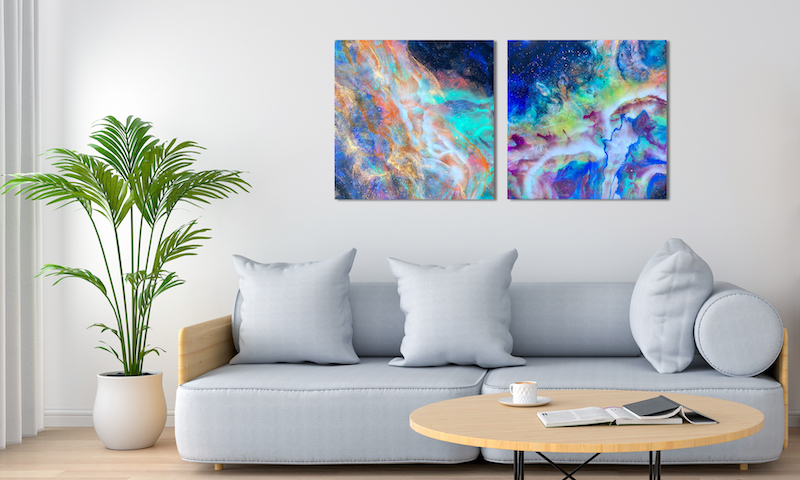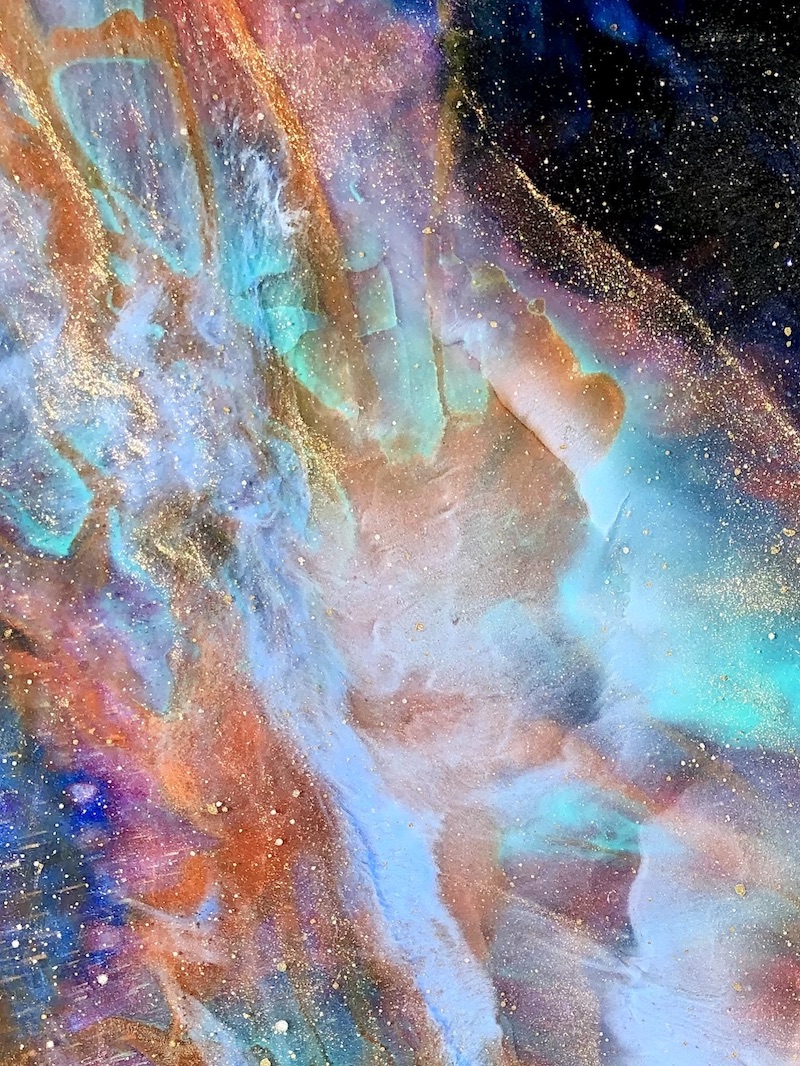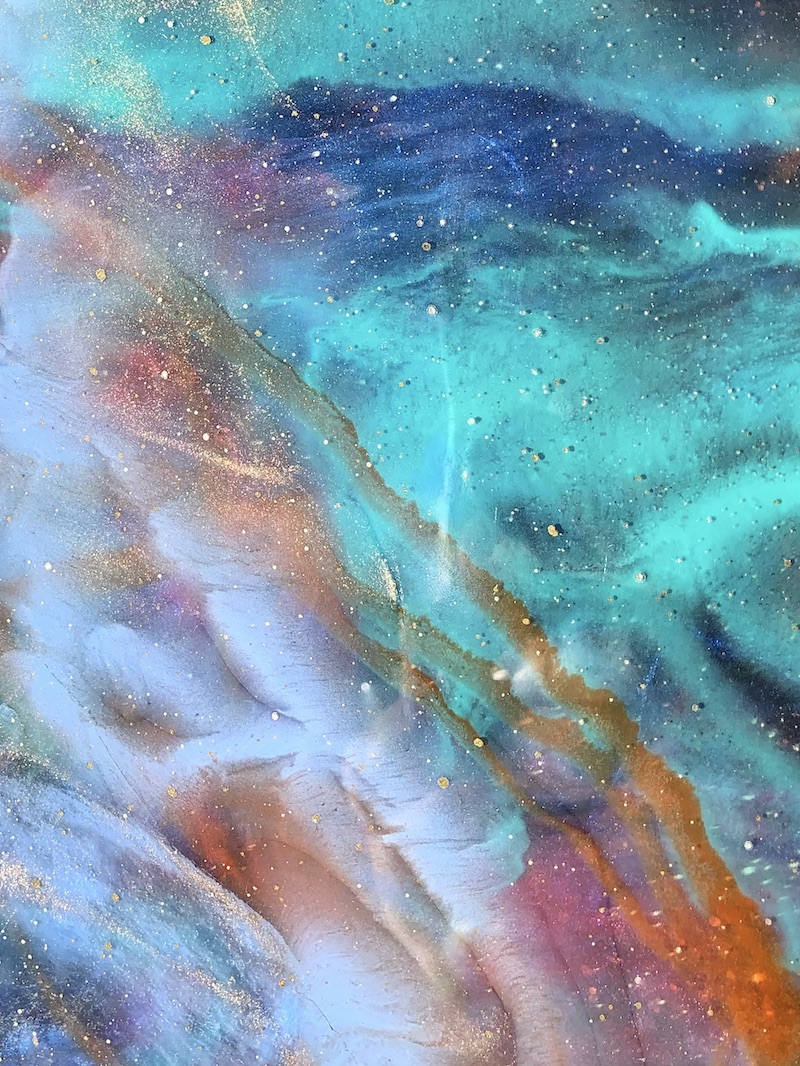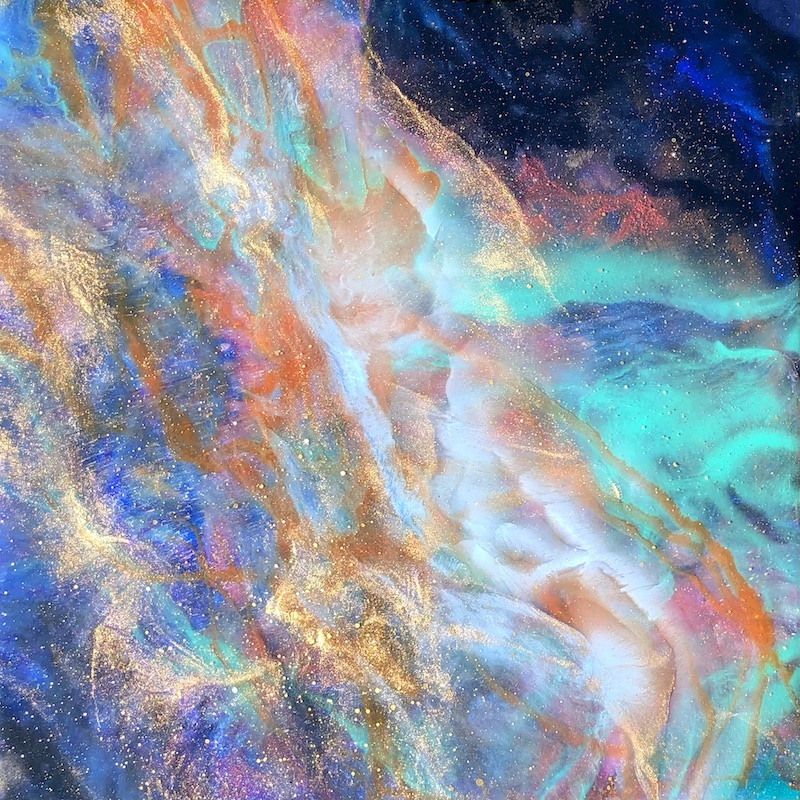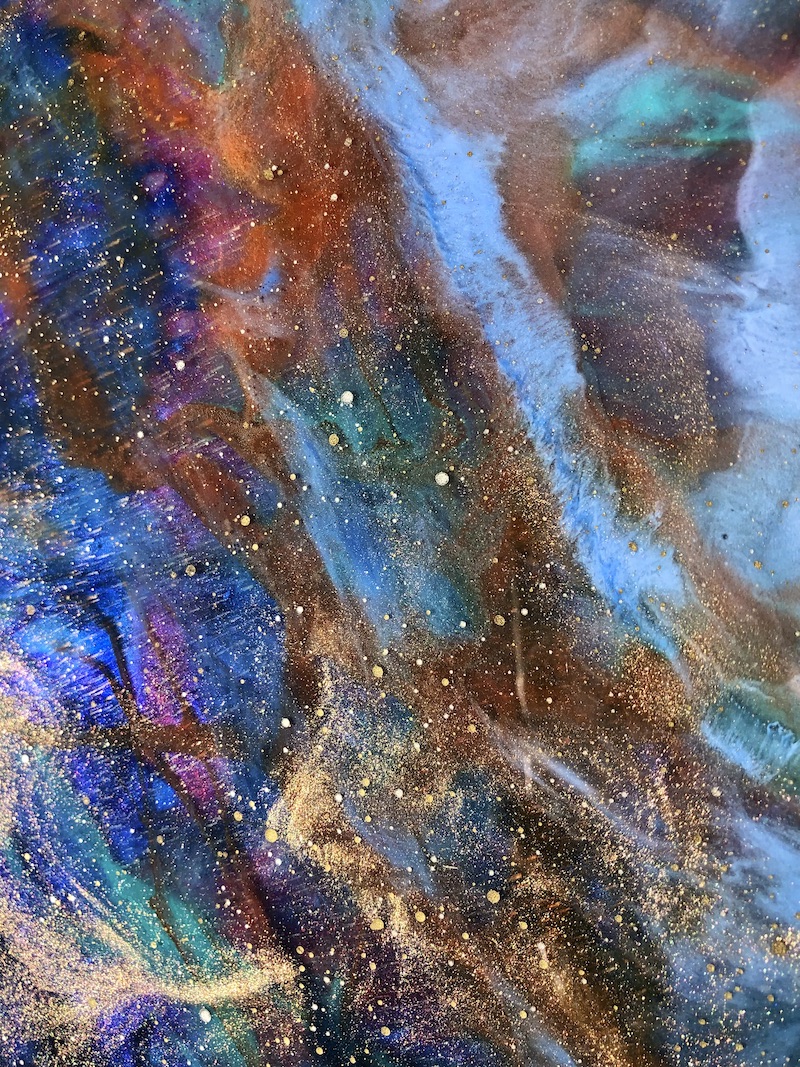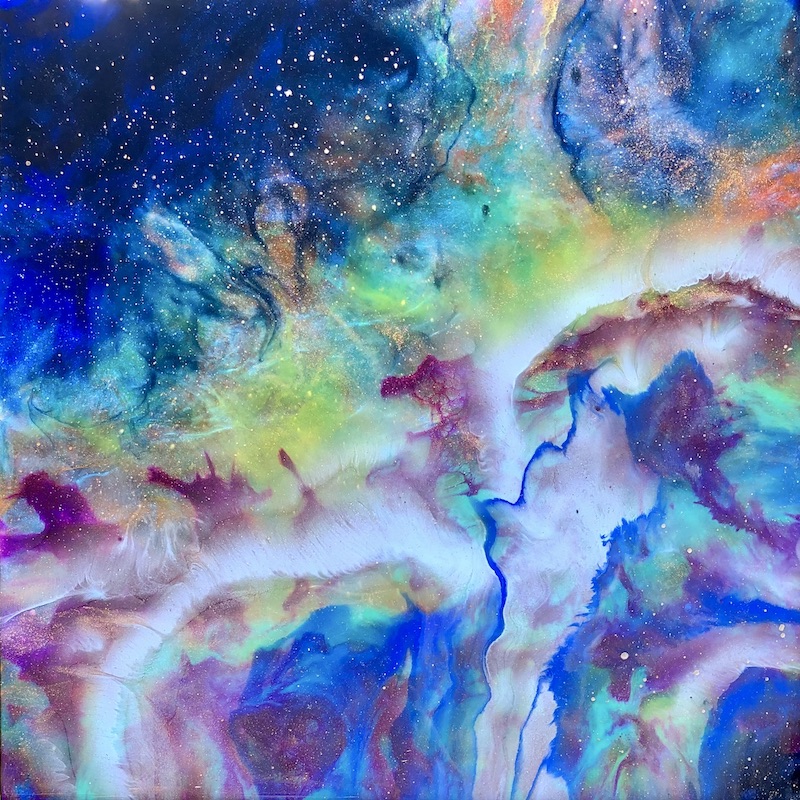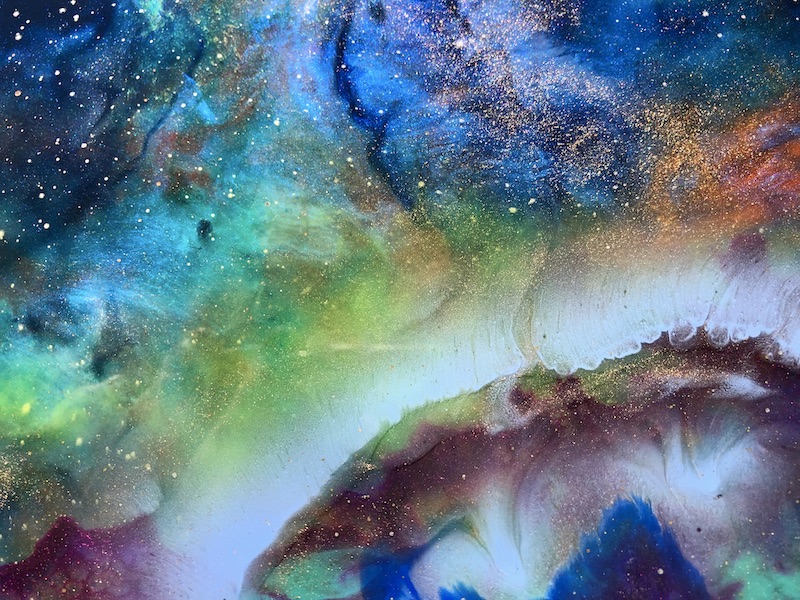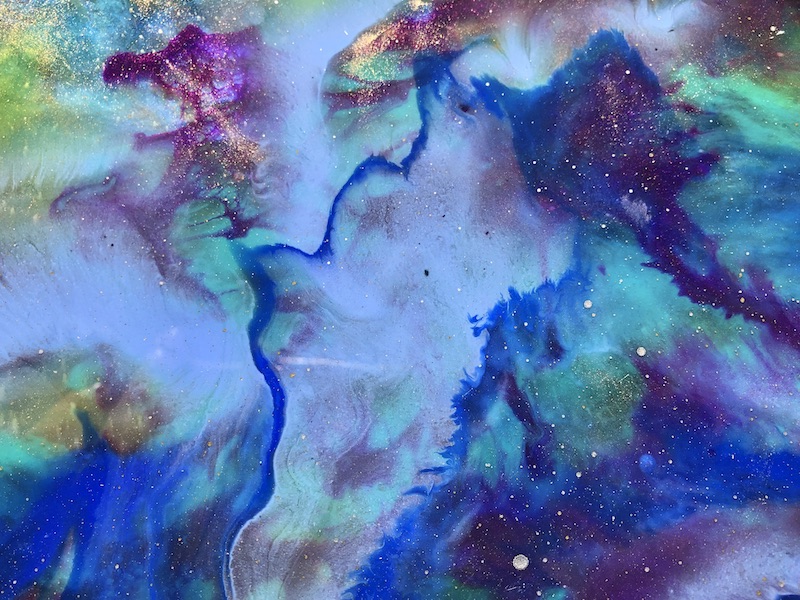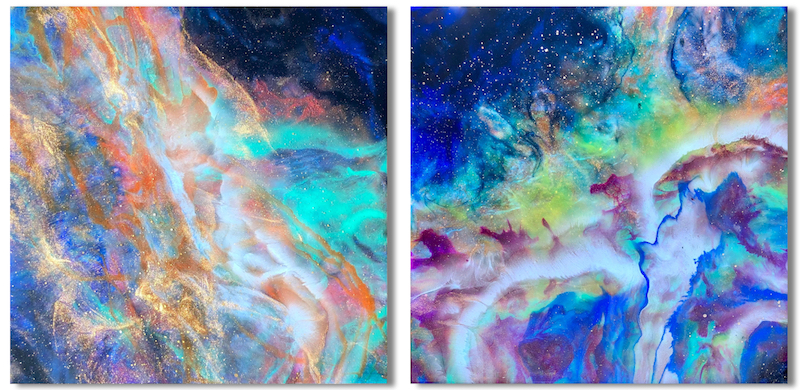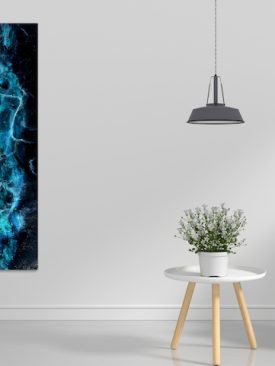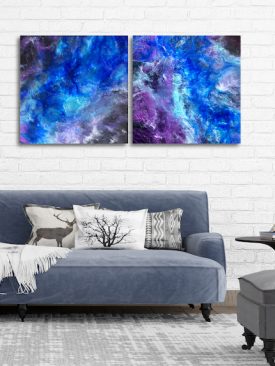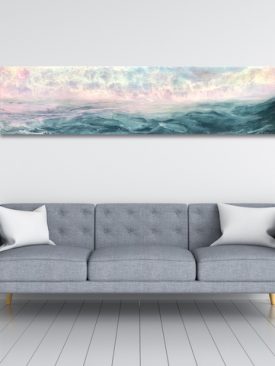
CETI ARCLON NEBULA
SEE ARTWORK PURCHASE PAGE HERE
CETI ARCLON NEBULA is a two-panel painting that Tiffani made using her iconic holographic resin layering painting technique. You can peer through the layers getting a depth that lets you day dream into the starry spaces and wonder about what exploration awaits us there. The nebulaic images coming out the James Webb infrared telescope tantalizes us with what awaits us. In an infinite universe, there is a good chance a nebula very much like this one exists.
- Size: Two Square 12″ Panels totaling 12″ x 24″
- Sides: “Shou Sugi Ban” effect* charcoal black wood sides just under an inch thick
- Materials: UV-Resistant, eco-friendly tinted epoxy resin, multilayered for extraordinary depth
*Sides: Originating in 18th century Japan, shou sugi ban is a particularly striking method of preserving wood by charring it with fire. Tiffani captures the look of this ancient tradition by sanding and staining the sides charcoal and rubbing it in to the wood grain before sealing it with a protectant.
**NOTE: This painting is best put in a high light environment so you can see all the details well. This is a mockup of the painting. The actual size is as stated.
WHAT IS RESIN PAINTING?
You can think of epoxy resin as a sort of liquid glass once it is mixed. After Tiffani mixes the two parts, the clock starts, leaving just about one hour to color the resin, pour it, and paint with it. It is about the consistency of honey while in this state. So she uses a knife and heat implements, like a blow torch, to paint these scenes. At the one-hour mark, it sets into its final form. Each layer takes about 72 hours to fully cure into a brilliant and extremely durable glass-like finish. Most paintings have several layers, creating a depth of field unrivaled by other mediums. You can see through the transparencies of certain areas of these layers to those below making the process almost sculptural. Tiffani is known for using this technique to create her signature immersive look of oceans and nebulae.
